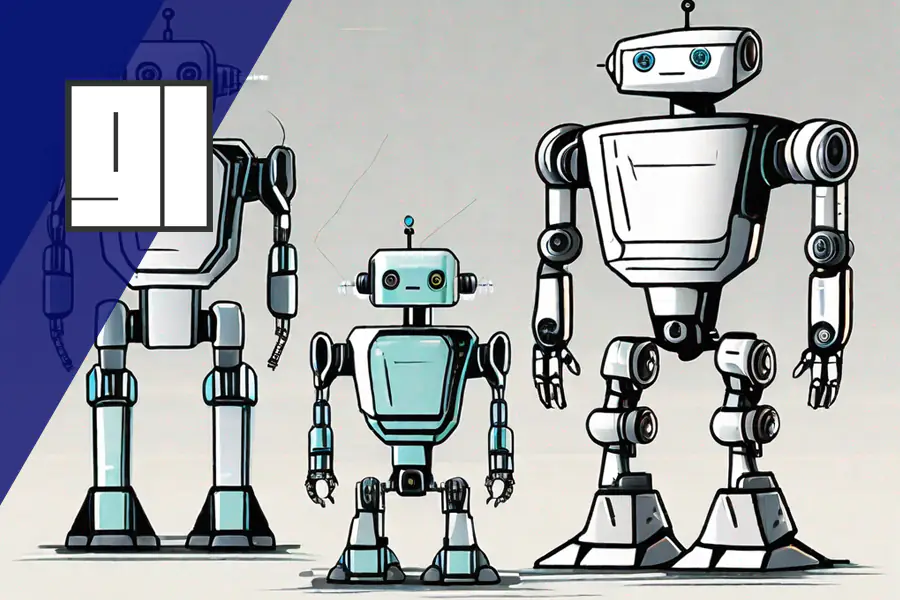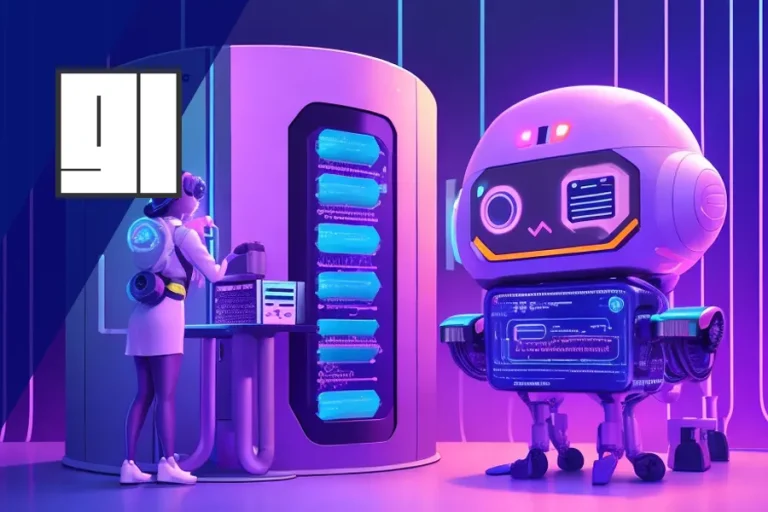Types of AI: Narrow vs. General vs. Super Intelligence
Artificial Intelligence (AI) is a fascinating field that has the potential to revolutionize the way we live and work forever. In this article, we will explore the different types of AI – Narrow, General, and Super Intelligence – and uncover the unique characteristics and capabilities of each. By understanding these distinctions, we can gain insights into AI’s current state and envision its future possibilities.
Understanding Artificial Intelligence
Before diving into the different types of AI, it’s important to grasp the concept of AI itself. At its core, AI is developing computer systems that can perform tasks that typically require human intelligence. These tasks can range from simple calculations to complex decision-making processes.
The evolution of AI has been a remarkable journey. From its early roots in the 1950s to today, AI has transformed from a theoretical concept to a practical tool that permeates various industries and aspects of our lives.
One of the key milestones in the history of AI was the development of the first electronic computer, known as the Electronic Numerical Integrator and Computer (ENIAC), in the 1940s. This groundbreaking invention paved the way for exploring AI capabilities and laid the foundation for future advancements.
In the 1950s, the field of AI began to take shape with the introduction of the term “artificial intelligence” by computer scientist John McCarthy. McCarthy and other pioneers in the field envisioned a future where machines could mimic human intelligence and perform tasks previously thought to be exclusive to humans.
Researchers focused on developing AI systems to solve complex mathematical problems and perform logical reasoning during this period. One of the notable achievements of this era was the creation of the Logic Theorist program by Allen Newell and Herbert A. Simon. The program was able to prove mathematical theorems using logical deduction, showcasing the potential of AI in the realm of problem-solving.
As technology advanced, so did the capabilities of AI. In the 1960s and 1970s, researchers explored the field of natural language processing, aiming to develop AI systems that could understand and communicate in human language. This led to the development of programs like ELIZA, which could simulate conversations with users by following predefined patterns.
Another significant development in AI came in the form of expert systems in the 1980s. Expert systems were designed to emulate the decision-making abilities of human experts in specific domains. These systems utilized knowledge bases and rules to provide expert-level advice and solutions to complex problems. Expert systems found applications in various fields, including medicine, finance, and engineering.
In the 1990s, AI research shifted towards machine learning, a subfield of AI that focuses on enabling computers to learn from data and improve their performance over time. This led to the development of algorithms and techniques, such as neural networks, which allowed machines to recognize patterns and make predictions based on large datasets.
Today, AI has become integral to many industries, revolutionizing sectors such as healthcare, finance, transportation, and entertainment. AI-powered systems are used to diagnose diseases, predict market trends, automate transportation, and create immersive virtual experiences.
Looking ahead, the future of AI holds tremendous potential. Ongoing research and advancements in deep learning, reinforcement learning, and robotics are pushing the boundaries of AI capabilities. As AI continues to evolve, it will undoubtedly shape how we live and work, opening up new possibilities and opportunities.
Narrow AI: Definition and Examples
Artificial Intelligence (AI) is a vast and ever-evolving field that encompasses various branches and technologies. One prominent branch of AI is Narrow AI, also known as Weak AI. As the name suggests, Narrow AI is designed to perform specific tasks within limited capabilities. It excels at one particular function but lacks the versatile abilities of human intelligence.
While Narrow AI may not possess the broad cognitive abilities of humans, it is incredibly proficient in its designated area. This specialization enables Narrow AI systems to outperform humans in specific tasks, making them highly valuable in various industries.
Real-world applications of Narrow AI can be found all around us. From voice-activated assistants like Siri and Alexa to recommendation algorithms on streaming platforms, Narrow AI enhances our daily experiences and streamlines efficiency.
Examples of Narrow AI and how they contribute to our lives:
Voice-Activated Assistants
Voice-activated assistants, such as Siri and Alexa, have become integral to our lives. These AI-powered virtual assistants utilize Natural Language Processing (NLP) algorithms to understand and respond to our voice commands. They can perform various tasks, including setting reminders, answering questions, playing music, and controlling smart home devices. The underlying Narrow AI technology enables these assistants to accurately interpret and execute our commands, making our lives more convenient and efficient.
Recommendation Algorithms
Have you ever wondered how streaming platforms like Netflix and Spotify recommend content that aligns perfectly with your preferences? The answer lies in the sophisticated, Narrow AI algorithms these platforms employ. Recommendation algorithms analyze vast amounts of user data, such as viewing history, listening habits, and user ratings, to generate personalized recommendations. By leveraging Narrow AI, these algorithms can accurately predict user preferences, ensuring we discover new content that resonates with our tastes.
The application of Narrow AI extends far beyond voice-activated assistants and recommendation algorithms. In the healthcare industry, Narrow AI is used to detect and diagnose diseases from medical images, aiding doctors in making accurate and timely diagnoses. In finance, Narrow AI algorithms analyze vast amounts of financial data to identify patterns and make informed investment decisions. Additionally, Narrow AI is utilized in autonomous vehicles, robotics, and even customer service chatbots.
As AI advances, Narrow AI systems are becoming increasingly sophisticated and capable. Researchers and developers are continuously pushing the boundaries of Narrow AI, exploring new ways to enhance its capabilities and broaden its applications.
In conclusion, Narrow AI, or Weak AI, is a branch of AI that excels at performing specific tasks within a limited range of capabilities. Its real-world applications are diverse and impactful, ranging from voice-activated assistants to recommendation algorithms. As technology progresses, Narrow AI will undoubtedly play an even more significant role in shaping our future.
General AI: An Overview
General AI, or Strong AI, represents the next level of AI advancement. Unlike Narrow AI, General AI aims to possess human-like intelligence and capabilities. It is not confined to a particular domain or task but exhibits a broad understanding of various subjects and the ability to learn and adapt.
The potential uses of General AI are vast and awe-inspiring. Imagine a future where intelligent machines can effortlessly understand and analyze complex data, perform creative problem-solving, and engage in meaningful conversations – not programmed to do so but naturally capable.
Imagine a world where General AI is integrated into various aspects of our daily lives. In healthcare, General AI could revolutionize the way medical diagnoses are made. With its ability to process vast amounts of medical data and learn from previous cases, General AI could assist doctors in accurately diagnosing illnesses and recommending personalized treatment plans.
In transportation, General AI has the potential to transform the way we travel. Autonomous vehicles powered by General AI could navigate complex road systems, making transportation safer and more efficient. These vehicles could analyze real-time traffic data, adapt to changing road conditions, and make split-second decisions to prevent accidents.
General AI could also have a significant impact on the business world. With its ability to understand and analyze complex data, General AI could assist in making informed business decisions. It could identify patterns and trends in large datasets, helping companies optimize their operations and efficiency.
Furthermore, General AI could have a profound impact on education. Imagine classrooms where General AI acts as a personalized tutor, adapting its teaching methods to suit each student’s needs and learning style. It could provide real-time feedback, offer additional resources, and create engaging learning experiences tailored to each student’s strengths and weaknesses.
But with all the potential benefits, General AI also raises important ethical considerations. As machines become more intelligent, questions arise about their rights and responsibilities. How do we ensure that General AI is used ethically and responsibly? How do we prevent the misuse of such powerful technology?
As we continue to advance in AI, it is crucial to have open discussions and establish guidelines to govern the development and use of General AI. This will help ensure that the benefits of this technology are maximized while minimizing the risks and potential negative consequences.
In conclusion, General AI represents a significant leap in AI advancement, potentially revolutionizing various industries and aspects of our lives. However, it also presents ethical challenges that need to be addressed. By fostering responsible development and usage, we can harness the power of General AI for the betterment of society.
Super Intelligence AI: The Future of AI
Super Intelligence AI represents the pinnacle of AI advancement – an artificial intelligence system that surpasses human intelligence in virtually every aspect. While we have yet to achieve this level of AI, the concept has sparked intrigue and concern among experts and the general public.
Understanding Super Intelligence AI requires us to ponder its potential impact on society. Will it lead to unprecedented advancements and solve some of humanity’s most complex problems? Or will it pose existential risks, as portrayed in science fiction?
Comparing Narrow, General, and Super Intelligence AI
Examining the similarities and differences between Narrow, General, and Super IntelligenceAI provides us with valuable insights into the progression of AI technology.
While all three types fall under the umbrella of AI, their scope and capabilities differ significantly. Narrow AI is specialized and focused, General AI demonstrates a broader grasp of intelligence, and Super IntelligenceAI, as the name suggests, surpasses human intelligence altogether.
The progression from Narrow AI to Super Intelligence AI is a captivating journey filled with breakthroughs and challenges. It represents humanity’s collective efforts to push the boundaries of what is possible with our intelligence and technological capabilities.
In conclusion, AI constantly evolves, and understanding the different types – Narrow, General, and Super Intelligence – is crucial in comprehending its true potential. These distinct branches of AI offer us a glimpse into a future where intelligent machines coexist with humanity, augmenting our abilities and reshaping our world. As we continue to push the boundaries of AI, let us embrace the possibilities and strive to create a future that benefits all of us.

Graz is a tech enthusiast with over 15 years of experience in the software industry, specializing in AI and software. With roles ranging from Coder to Product Manager, Graz has honed his skills in making complex concepts easy to understand. Graz shares his insights on AI trends and software reviews through his blog and social media.







